George Floyd death: Violence erupts on sixth day of protests
- Published
'This is pain right here' - Washington DC protests turn violent
Violence has erupted in cities across the US on the sixth night of protests sparked by the death in police custody of African-American George Floyd.
Dozens of cities imposed curfews, but many people ignored them, leading to stand-offs and clashes.
Riot police faced off with protesters in New York, Chicago, Philadelphia and LA, firing tear gas and pepper bullets to try to disperse crowds.
Police vehicles were set on fire and shops were looted in several cities.
The country is experiencing the most widespread racial turbulence and civil unrest since the backlash to the assassination of Martin Luther King in 1968.
The outpouring of anger began last Tuesday, after a video showed Mr Floyd being arrested in Minneapolis and a white police officer continuing to kneel on his neck even after he pleaded he could not breathe and fell unconscious.
More than 75 cities have seen protests, with streets only days ago deserted because of coronavirus full of demonstrators marching shoulder to shoulder. Some US officials have warned of protest-connected virus outbreaks.
The Floyd case has reignited deep-seated anger over police killings of black Americans and racism. It follows the high-profile cases of Michael Brown in Ferguson, Eric Garner in New York and others that have driven the Black Lives Matter movement.
For many, the outrage also reflects years of frustration over socio-economic inequality and discrimination, not least in Minneapolis itself, where George Floyd died.
What happened in the latest protests?
About 16,000 troops from the National Guard - the US reserve military force for domestic emergencies - have been deployed to deal with the unrest across 24 states and Washington, DC, where crowds once again gathered near the White House on Sunday night.
Demonstrators lit fire to buildings there, including a historic church known as the church of the presidents, and threw stones at riot officers. Police used tear gas in response.
In Louisville, Kentucky, a man was shot dead in a confrontation between protesters, police and the National Guard after midnight. Shots were fired at police officers and guard troops as they moved to disperse a crowd in a car park and they "returned fire", leaving one man dead, Louisville Metro Police said.
As on Friday and Saturday, demonstrations that had been peaceful during the day again descended into violence as night fell.
Police vehicles were vandalised and set alight in several cities, while riot officers continued to respond with tear gas and flash grenades.
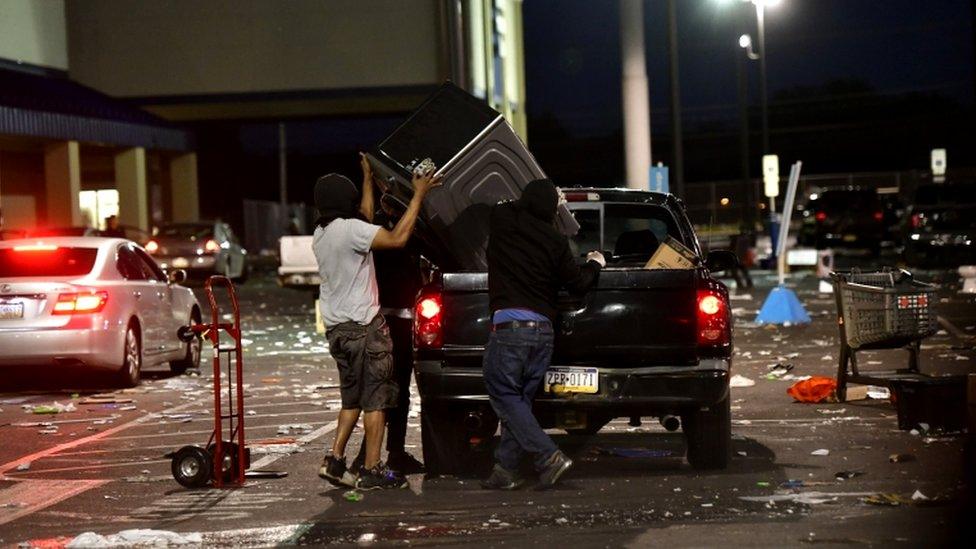
Stores were looted in Philadelphia, Pennsylvania
At least 4,400 people have been arrested in several days of protests, according to the Associated Press news agency, for offences including blocking motorways, looting and breaking curfew.
On Monday, President Trump told state governors in a videoconference that they looked "weak", according to leaked audio obtained by CBS, external. "You have to dominate, if you don't dominate you're wasting your time," the president reportedly said.
A 19:00 curfew has now been imposed in Washington DC for Monday and Tuesday nights.
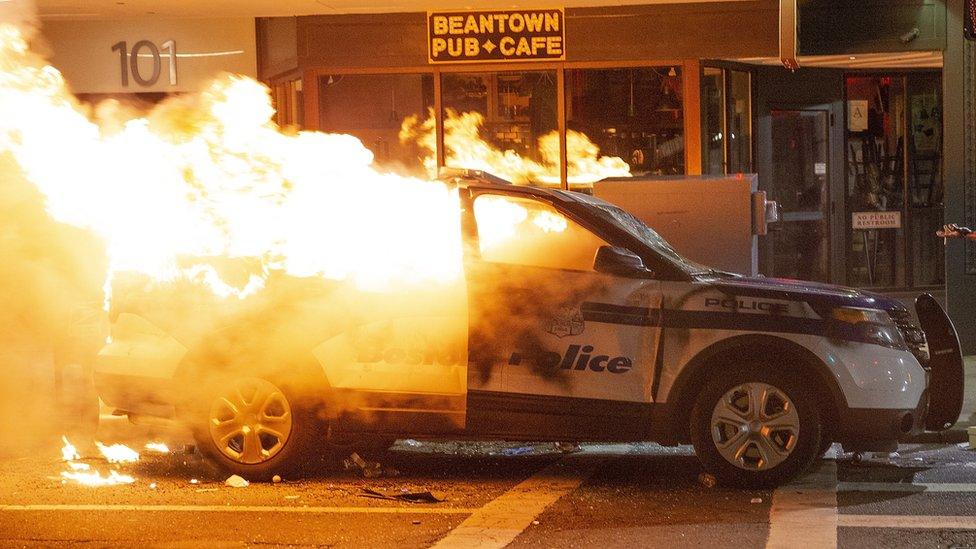
Protesters reportedly threw bottles at riot officers in Boston before torching a police cruiser
In Minneapolis, a lorry driver was arrested after reportedly breaching a road barrier before speeding towards a crowd of protesters marching along a major motorway. The driver was taken to hospital with minor injuries and later to the county jail.
There were no immediate reports of other casualties.
Minnesota's Governor Tim Walz said the motive of the driver was unclear, adding: "To not have tragedy and many deaths is simply an amazing thing."
A tanker has been driven at protesters in Minneapolis
Many videos shared on social media appeared to show riot police responding disproportionately to demonstrators. In Atlanta, Georgia, two officers were sacked on Sunday for using excessive force - including using a taser on two young college students.
Journalist 'permanently blinded' in one eye in US riots
Dozens of journalists have also spoken out about being targeted by police despite making clear they are with the media. A BBC cameraman was charged at by a shield-carrying officer near the White House., external
There have also been protests in European cities, including London, Dublin, Berlin, Zurich and Brussels.


For three years, Donald Trump presided over a nation of relative peace and prosperity. The crises he faced were largely of his own making, and he confronted them by rallying his supporters and condemning his opponents.
Now Trump faces a situation ill-suited to a playbook of division. The US economy has been hobbled by a deadly pandemic. George Floyd's death at the hands of a Minneapolis police officer has spread racial unrest across the nation. The public is uncertain and afraid - and increasingly angry.
These are circumstances that would test the abilities of even the most skilful leaders. This president, however, risks becoming lost at sea. His public calls for unity and healing have been undermined by a penchant for Twitter name-calling and bellicosity. Message discipline, a valuable attribute at this moment, is not his forte.
There may be no easy way to guide the nation through its current peril. Barack Obama's measured coolness did nothing to stop the fires of Ferguson any more than Richard Nixon's law-and-order edicts quelled Vietnam-era unrest.
The economic and social devastation of the pandemic has created a political landscape of dry brush ignited by the lightning strike of Floyd's death. The president may not be able to contain the wildfire, even if he isn't feeding the flames.

Terrence Floyd, George's younger brother, told ABC News, external he condemned the violent protests, saying his brother stood for peace.
"I'm outraged too," he said. "Sometimes I get angry... I want to go crazy. My brother wasn't about that. My brother was about peace. You'll hear a lot of people saying: 'He was a gentle giant.'
"I just had to come down here to speak to people, and let people know, just channel your anger elsewhere. Don't tear up your town."
"It's like we're re-living the same movie": How black British people feel about George Floyd's death
What happened to George Floyd?
On the evening of 25 May, police were called to a grocery store where George Floyd had allegedly paid for cigarettes with a counterfeit $20 note. They found him in his car outside and tried to put him in a police vehicle, but Mr Floyd dropped to the ground, telling officers he was claustrophobic.
According to police, he physically resisted and was handcuffed. Video of the incident does not clearly show what happened at that point.
Bystander footage shows three police officers kneeling on the unarmed Mr Floyd, with officer Derek Chauvin's knee on his neck. Mr Floyd can be heard saying "please, I can't breathe" several times and "don't kill me" but Mr Chauvin does not remove his knee despite pleas from bystanders.
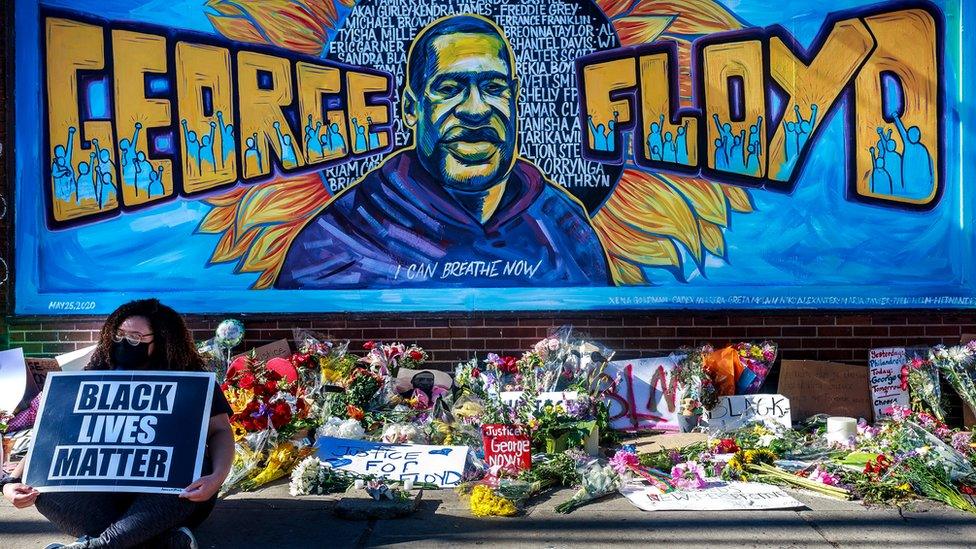
A memorial to George Floyd near the spot where he died while in police custody in Minneapolis
According to a preliminary autopsy, the police officer had his knee on Mr Floyd's neck for eight minutes and 46 seconds - almost three minutes of which was after Mr Floyd became non-responsive.
Nearly two minutes before Mr Chauvin removed his knee the other officers checked Mr Floyd's right wrist for a pulse and were unable to find one. He was taken to hospital and pronounced dead around an hour later.
Mr Chauvin, 44, has been charged with murder.
Minneapolis voices: ‘As a black American I am terrified’

Do you have any information about the protests? Share your experiences by emailing haveyoursay@bbc.co.uk, external.
Please include a contact number if you are willing to speak to a BBC journalist.
WhatsApp: +44 7756 165803
Tweet: @BBC_HaveYourSay, external
Send pictures/video to yourpics@bbc.co.uk, external
Please read our terms & conditions and privacy policy
- Published31 May 2020
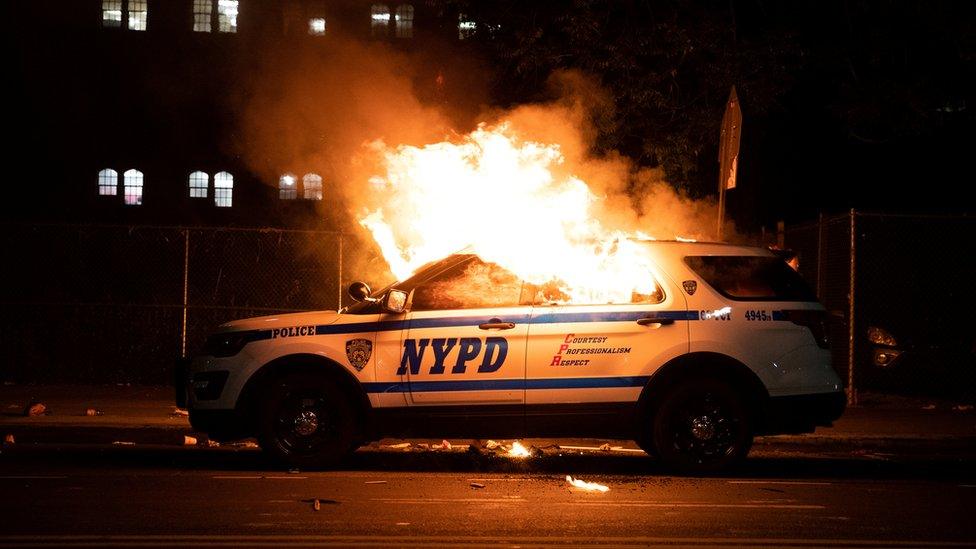
- Published29 May 2020
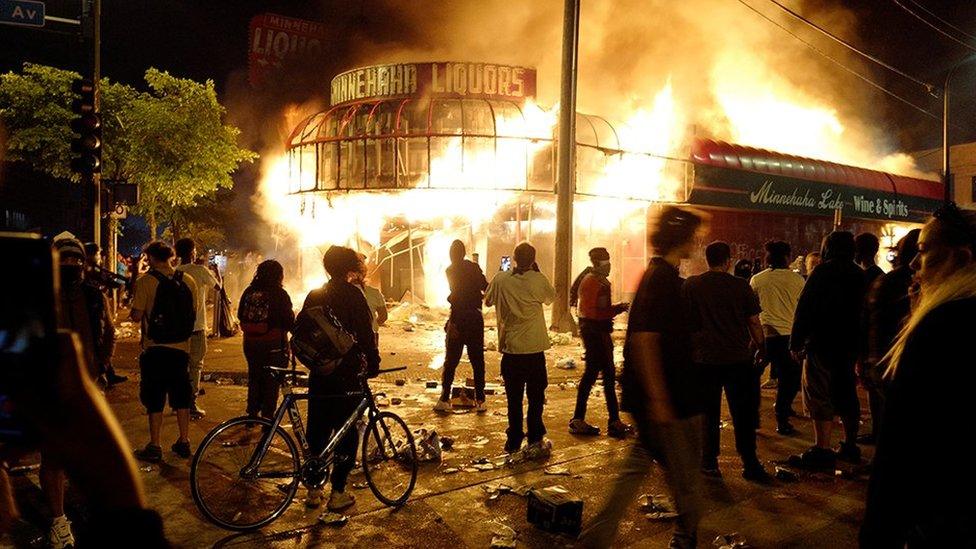
- Published29 May 2020
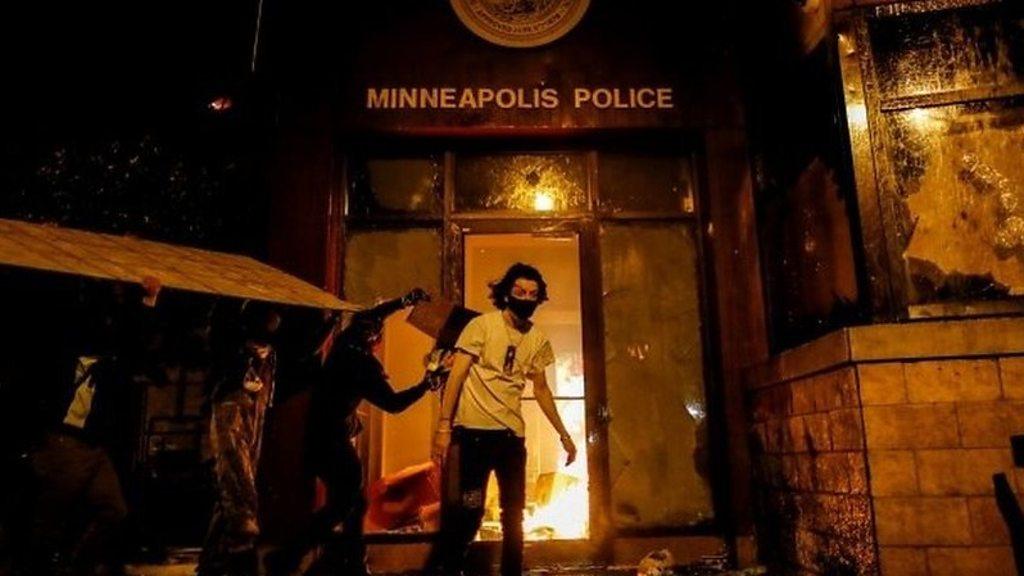
- Published31 May 2020
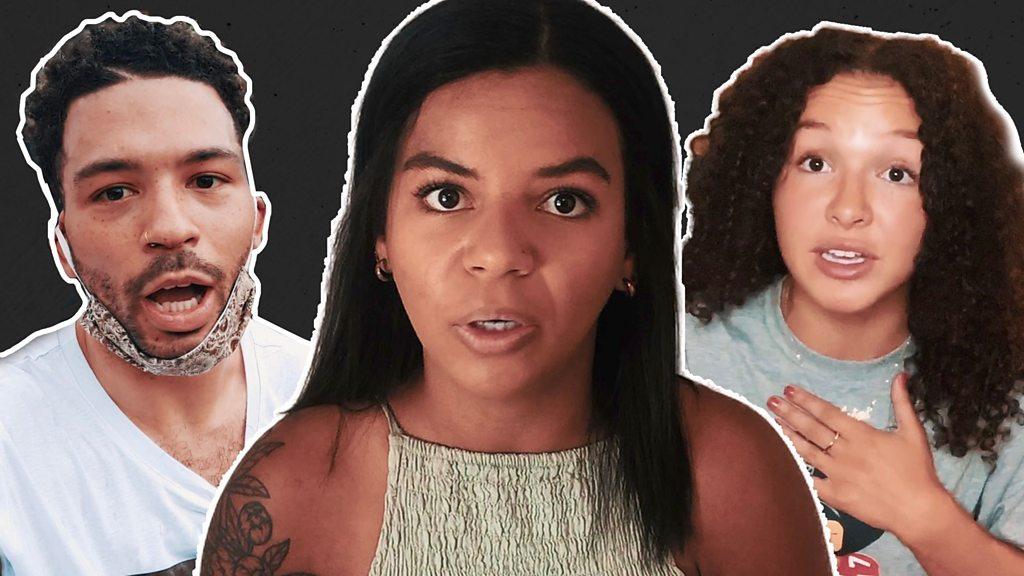
- Published29 May 2020
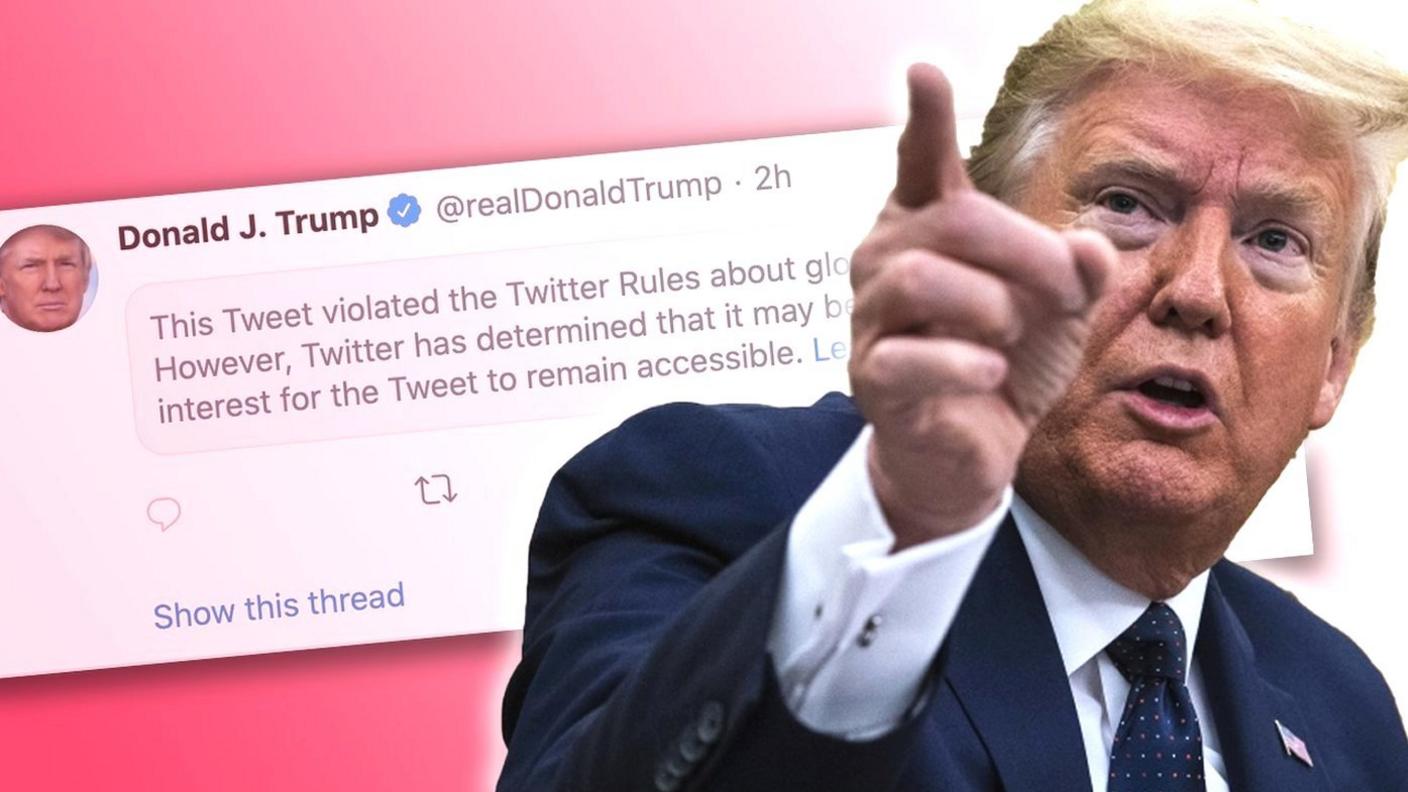
- Published28 May 2020
